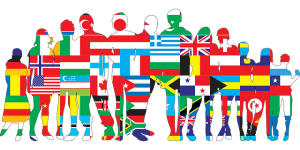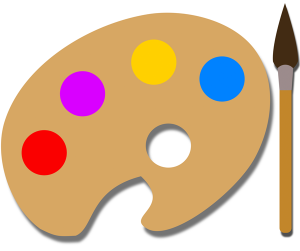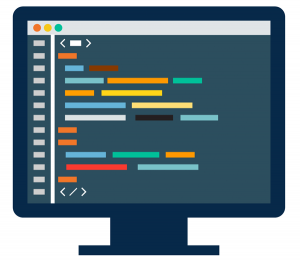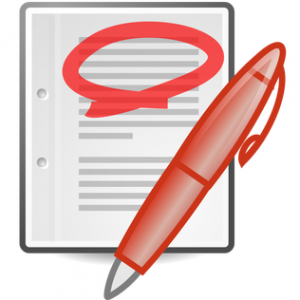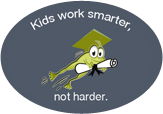 Parenthood is full of transitions. The change from being a person without children to being a parent, the first day of childcare, the first day of preschool, the first day of kindergarten, and more. But going from elementary to middle school can be a profound and intimidating transition for both parents and children.
Parenthood is full of transitions. The change from being a person without children to being a parent, the first day of childcare, the first day of preschool, the first day of kindergarten, and more. But going from elementary to middle school can be a profound and intimidating transition for both parents and children.
Transition to Middle School – Challenges for Parents:
Transitioning from elementary to middle school can have a big impact on a family. The location of the child’s school, the cultural influences around the family, and economic factors will all have bearing on how big a challenge this change presents to parents. So how is middle school different from elementary school? Here are some changes that will affect parents of students transitioning into middle school
1. School location:
In some school systems, the change from elementary to middle school might simply involve moving to a different hall in the school or a different room, but in larger districts, your child is likely to be enrolled in a different school. When this is the case, there could be challenges with getting your child to and school, and getting him or her back home again. It could mean a change in the neighborhood through which he or she will need to walk to and from school, raising potential safety considerations
2. School Supplies:
Parents will notice a definite change in the type and cost of school supplies required. Students might be asked to provide a calculator, specific notebooks for a variety of classes, colored pencils, or markers instead of crayons. School supplies at the middle school level can include items such as index cards or even document sleeves.
3. Communication with Teachers:
Throughout elementary school, students spend most of their day with one specific teacher, even though they might attend special classes such as art, music, or physical education with other teachers. At the middle school level, different teachers will focus on a specific subject area. Parents will need to meet with each teacher individually for parent/teacher conferences.
Pete Lorain, former middle school principal and former president of the National Middle School Association, recommends that parents attend any Parent Nights hosted at the school in order to establish relationships with teachers. When contacting the school for information about grades or other matters, parents will need to be very specific about which class they are asking about. If the child is sick, parents will need to request homework from multiple teachers.
4. Communication with the School Administration:
It is always a good idea, as a parent, to attend Open House and to read all notes that come home from school. Pete Lorain recommends that parents attend school meetings to familiarize themselves with issues or concerns their children may have. Since middle school children tend to become less communicative, occasional unannounced “check-in” visits or phone calls when nothing, in particular, is going on will establish a pattern of partnership with the school leadership. If your child has special needs, make contact with the middle school counselor, and make sure that he or she knows anything about your child that may need their attention at some point. This is particularly important when the special consideration involves medical needs, or if your child participates in ongoing therapy of any kind.
5. Emergency plans:
Set up a plan for what to do in the event of an emergency. This can range from your child becoming ill while at school, to all-out disasters. Make arrangements with a family member or friend to be available to your child on those occasions when you are too far away or too busy at work to be there. Develop a plan for how to find each other in the event that your local government infrastructure is interrupted.
6. Expanded curriculum choices:
Middle school students will continue to refine reading, writing and math skills, but might have additional course choices. For example, a student might have a choice between band, choir or fine-arts as an elective credit.
7. Extracurricular Events:
More extracurricular events become available to students at the middle school level in most school districts. These create a need for added planning. They can involve transportation, club dues, special uniforms, craft supplies and more. In addition, most parents enjoy attending sports events or performances where their child is involved.
8. Clothing:
Unless the child attends a school that requires uniforms, clothing expectations sometimes change. Before buying a fall wardrobe for a middle school child, parents are well-advised to request and read the school dress code policy for students. Furthermore, some parents might need to become creative when dealing with clothing requirements for some classes, such as physical education. You may also need to provide safety gear for some classes.
9. Portable electronics:
Cell phones, tablets and other small electronics can become problematic in the school setting. Learn what your school’s policy is on such items before supplying them to your child or allowing them to go to school.
Transition to Middle School – Challenges to Children:
1. Personal Change:
Middle school encompasses the years from age eleven through age thirteen. Girls grow a lot while in middle school, and most will experience the girl issues that every parent dreads at some time during these years. Most boys will experience their growth spurts later, but they also are beginning to have physical changes. For a brief time, girls might be taller and heavier than their male classmates. Both become excruciatingly self-conscious as they experience changes in their bodies and in their ways of thinking. Be prepared.
2. Multiple Classrooms:
As noted previously, your elementary-age child spent his or her days with a primary teacher. Now, he or she will change classes multiple times during the day. This will require your child to be able to either quickly access a school locker or to carry multiple items to and from classes. In order to manage this efficiently, he or she will need to develop new organizational skills. Part of Gradeleap’s mission is to help kids become better at organization with school assignements.
3. New Friends, New Enemies:
The school environment is like a little community. Leaders rise to the top, groups develop, friendships are made, and even feuds happen. Affiliations that were innocent in elementary school take on a new significance as students reach puberty. Personality conflicts that were once resolved through a teacher or counselor can now spill over into extracurricular activities or even into the world at large. Middle school students are old enough and big enough to cause actual damage during physical altercations. They also have full command of language that can either support or hurt classmates.
4. Online threats:
If your child is attached at the thumbs to the greater community, he or she can come directly into conflict with school authority. Furthermore, children who are electronically connected through social media are at risk for inappropriate or even dangerous contacts. On the flip side, texting can be a great family communication method and a solution for staying connected in emergency situations.
5. Academic Changes:
Teachers are fully aware that middle school students are experiencing many internal changes. Therefore, much of the curriculum taught at this level is repetition and refinement of material presented in elementary school. However, it is presented differently. Students might be more involved in projects and be expected to take greater responsibility for their completion
6. Greater Expectations at Home:
Parents might begin to expect a middle school child to take more responsibility for home chores. He or she might be expected to wash dishes, keep an area of the house clean (in addition to their personal space), or even do their own laundry.
Transition to Middle School – Help Your Child Make the Change:
The hardest part of helping your middle school child make the change might be accepting the changes in your child and in your relationship. He or she might have emotional outbursts or retreat into silence. It is important to accept that pre-teens’ bodies and thought processes are changing.
- Plan Ahead:
- Check with your school to see if they have an Open House or even if they have a day in the spring when your child can visit the middle school to see what it will be like. If you are not moving, many school districts now have a day when elementary students visit the middle school as a group and have a chance to meet teachers, see the classrooms and eat in the cafeteria.
- Set aside extra money to deal with added school supplies and unexpected expenses. Budget a small, but reliable, allowance for your child to cover incidentals such as club dues, charitable collections, and fundraising events. Explain how the money is to be used, and that once it is gone, there will not be any advances or loans before the next allowance.
- Buy the school supplies that are requested by your school – no more, no less. Added supplies can actually cause problems within the classroom. Lack of a particular item, such as a pencil, appropriate notebook or calculator can make it difficult for your child to complete the required work.
- Visit the school with your child during Open House. The Open House at the beginning of the school year is one of the important transition activities for middle school students. Help your child learn how to open the school locker. Take some time to let the student practice opening the locker quickly. Tour the building so that you and your child have a good idea of where the classrooms, library, gym and cafeteria are located.
- Practice the art of letting go:
Encourage your child to do as much for him or herself as is practical or possible.
-
- Provide an alarm clock to help with self-starting mornings
- Set up a bulletin board where all family members can leave notes.
- Minimize rules, but make them clear and practical.
- Respect your child’s emotional response to situations. Remember that he or she is becoming a young adult, and treat him or her as such.
Transition to Middle School – Maintain Awareness and Communication:
Read all communication from your child’s school, and be proactive in inquiring about your child’s well-being if you have not had any recent communication. Many schools now provide students with planners, and require parents to sign off on homework, field trips, and disciplinary notes. Keep up your end of this type of communication.
Pete Lorain advises that parents learn about pre-teens and young teens and their developmental stages. Pre-teens can be moody, but be alert to sudden mood changes, sadness or anger that seems to continue past a reasonable amount of time. Lorain recommends that parents emphasize the positive aspects of middle school to their children, while also watching for any signs of depression.
Transition to Middle School – Remember that this is your beloved child:
In spite of moods, homework, grades and chores, this is your child. He or she is unique, individual and only young this one time. Celebrate this milestone in your child’s life.
Sources:
Lorain, Pete. “Transition to Middle School.” Rss. NEA, n.d. Web. 15 Feb. 2015.





